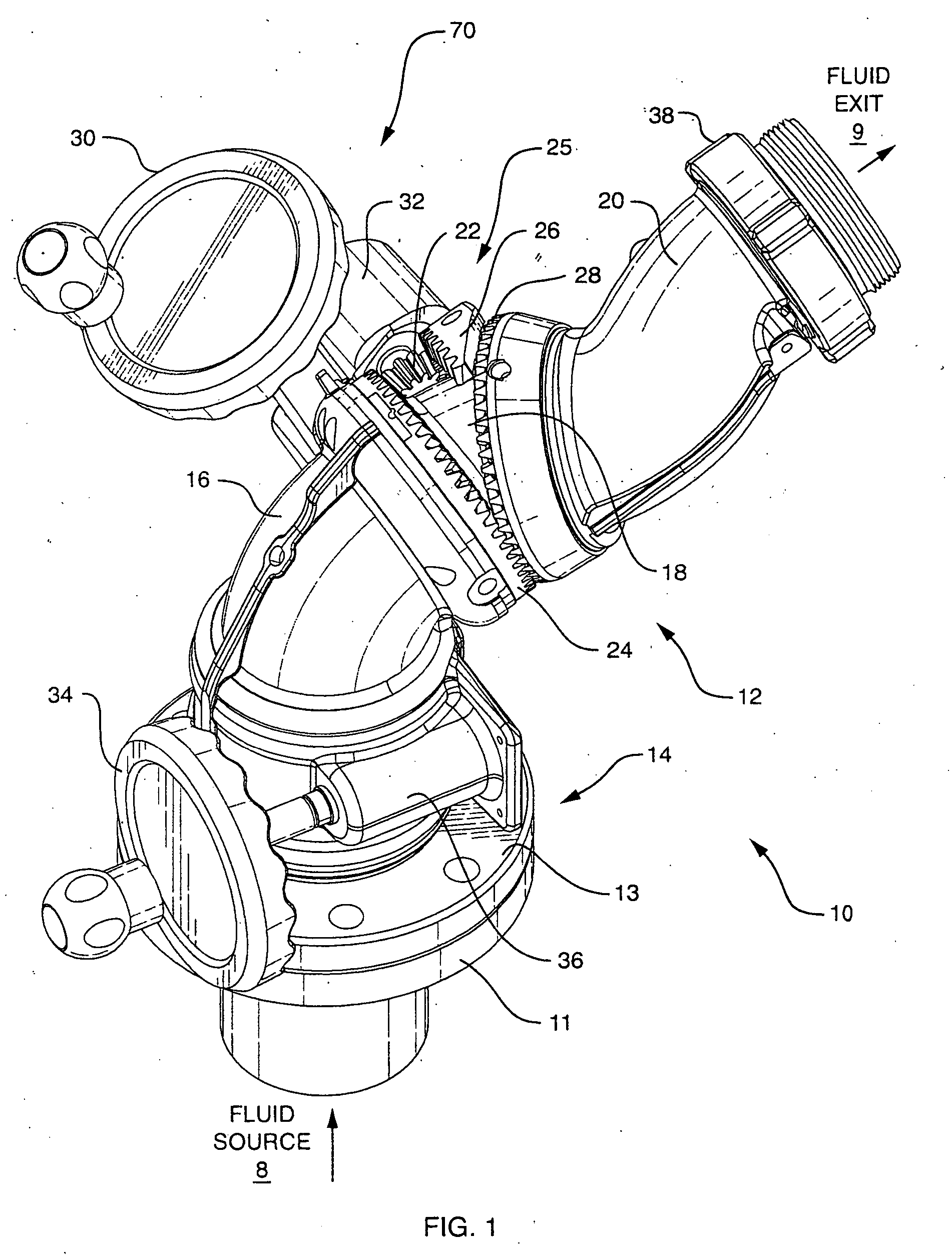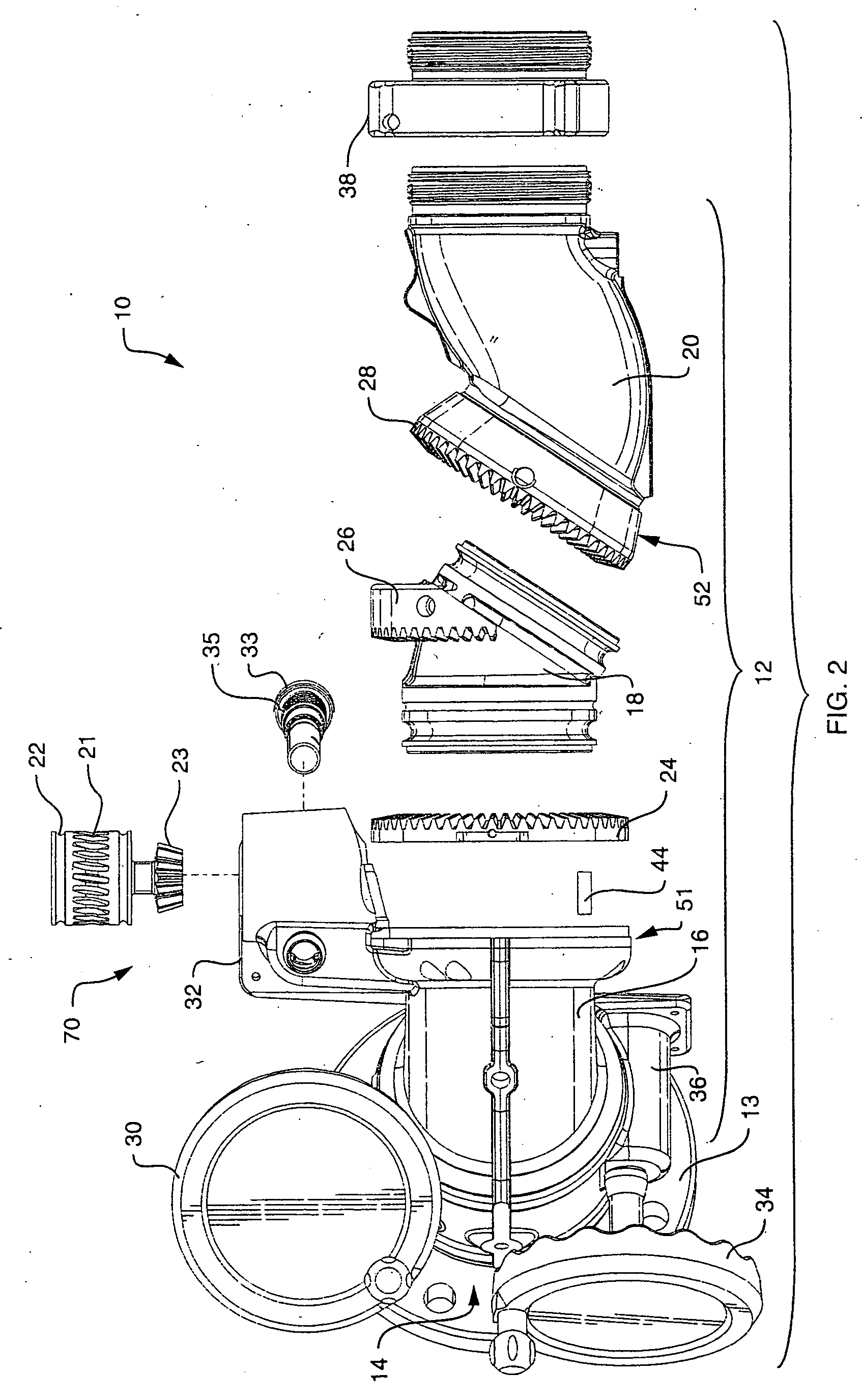Segmented monitor
- Summary
- Abstract
- Description
- Claims
- Application Information
AI Technical Summary
Benefits of technology
Problems solved by technology
Method used
Image
Examples
Embodiment Construction
[0045] Referring to FIG. 1, a perspective view of a firefighting segmented monitor 10 is shown according to the invention. The segmented monitor 10 is a conduit used to position the trajectory of a pressurized fluid source 8 (usually water), received at an inlet end of a first segment or stationary segment 13, and the fluid is discharged at the fluid exit 9 and directed towards a target. The segmented monitor 10 in fire service is generally fitted with a nozzle in order to increase the velocity of the fluid and deliver a straight stream over considerable distance. The segmented monitor 10 is shown in the preferred embodiment as a nominal 4 inch size and rated for a maximum flow of 2000 gallons per minute. However, other sizes of the segmented monitor 10 may be implemented. With the centerline of the monitor's stationary segment 13 vertical (fluid flowing straight up), the range of discharge elevation of the segmented monitor 10 is from 46 degrees below horizontal to 90 degrees above...
PUM
 Login to View More
Login to View More Abstract
Description
Claims
Application Information
 Login to View More
Login to View More - R&D
- Intellectual Property
- Life Sciences
- Materials
- Tech Scout
- Unparalleled Data Quality
- Higher Quality Content
- 60% Fewer Hallucinations
Browse by: Latest US Patents, China's latest patents, Technical Efficacy Thesaurus, Application Domain, Technology Topic, Popular Technical Reports.
© 2025 PatSnap. All rights reserved.Legal|Privacy policy|Modern Slavery Act Transparency Statement|Sitemap|About US| Contact US: help@patsnap.com



